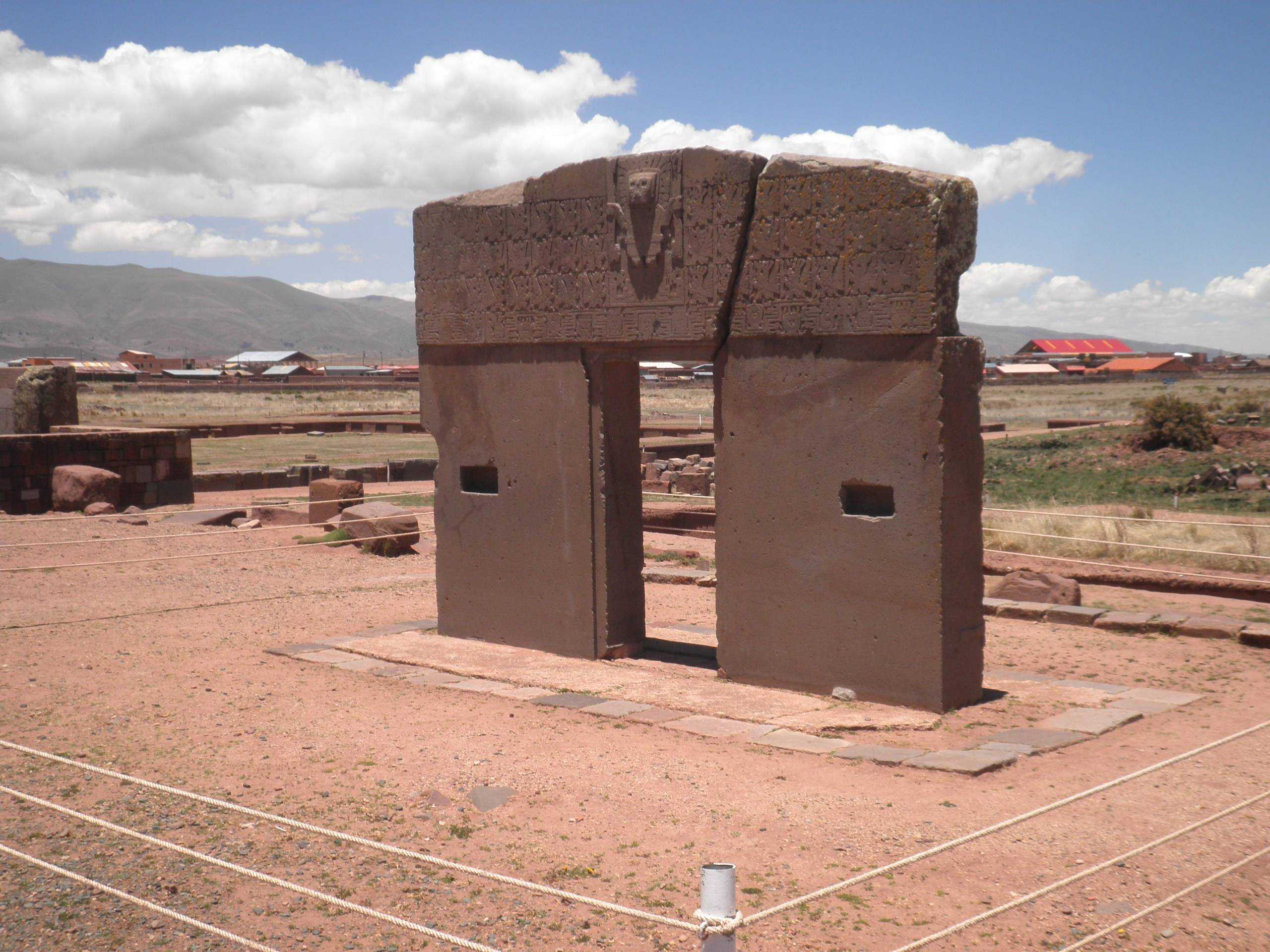High in the Bolivian Andes lies the Gate of the Sun, a monolithic marvel that speaks volumes about the ingenuity and astronomical knowledge of the ancient Tiwanaku people. Carved from a single massive block of stone, this captivating gateway has sparked endless fascination and debate among historians, archaeologists, and curious travelers alike.
Get your dose of History via Email
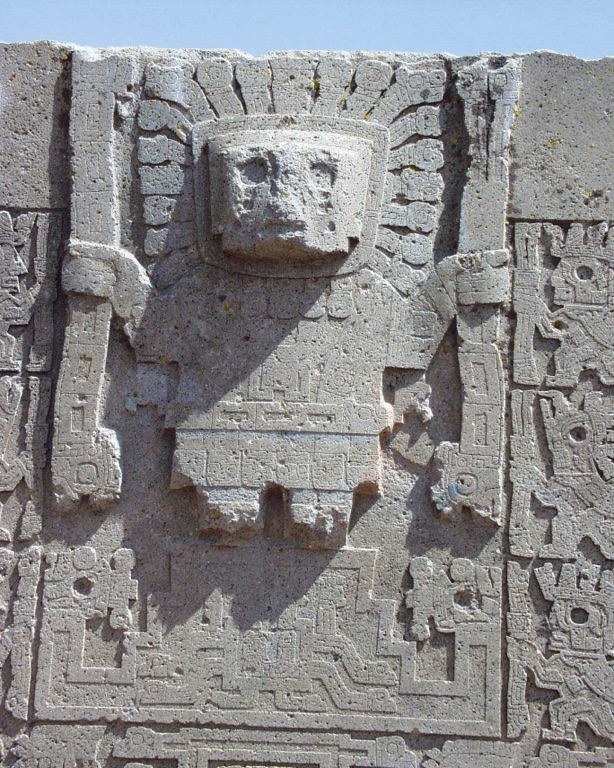
Unveiling the Past: A Relic of the Tiwanaku
The Gate of the Sun stands as a testament to the vanished Tiwanaku civilization, a culture that flourished near Lake Titicaca between 500 and 950 AD. Estimated to be over a millennium old, the gate is one of the most well-known and studied relics left behind by this enigmatic society. The Tiwanaku were renowned for their advanced understanding of astronomy, agriculture, and architecture, and the Gate of the Sun stands as a prime example of their expertise in these areas.
Tiahuanaco Context
Tiahuanaco, the site where the Gate of the Sun is located, is near Lake Titicaca at about 3825 meters above sea level, near La Paz, Bolivia. This region was the heartland of the Tiwanaku culture, which extended its influence over parts of Peru and Bolivia. The gate is believed to have been part of a larger complex, possibly located at the top of the Akapana Pyramid or within the Kalasasaya complex.
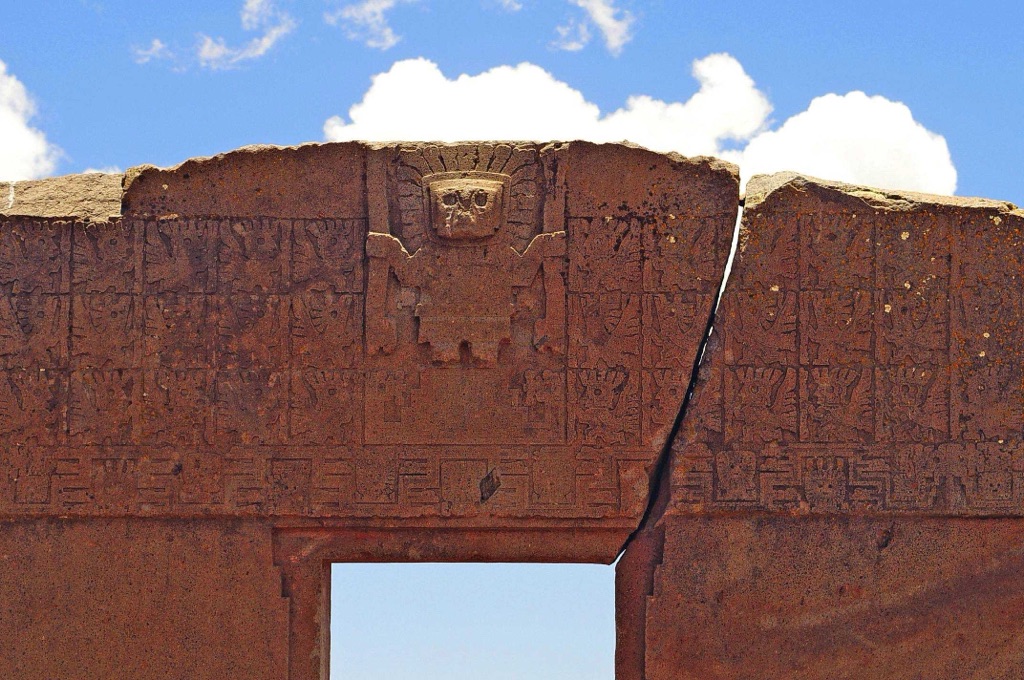
Architectural Grandeur: A Gateway to Wonder
Standing roughly 3 meters tall and 4 meters wide, the Gate of the Sun is a staggering feat of stonework. Carved from a single block of andesite granite, it weighs an estimated 10 tons, showcasing the remarkable skills of the Tiwanaku stone carvers. The intricate carvings adorning the gate are a captivating sight, with the central figure – a presumed deity known as the “Lord of the Staffs” – taking center stage surrounded by winged creatures and human-like forms. Some figures represent condor heads, while the door itself is deeply ornamented with geometric and anthropomorphic figures, emphasizing the Tiwanaku’s sophisticated artistic sensibilitie
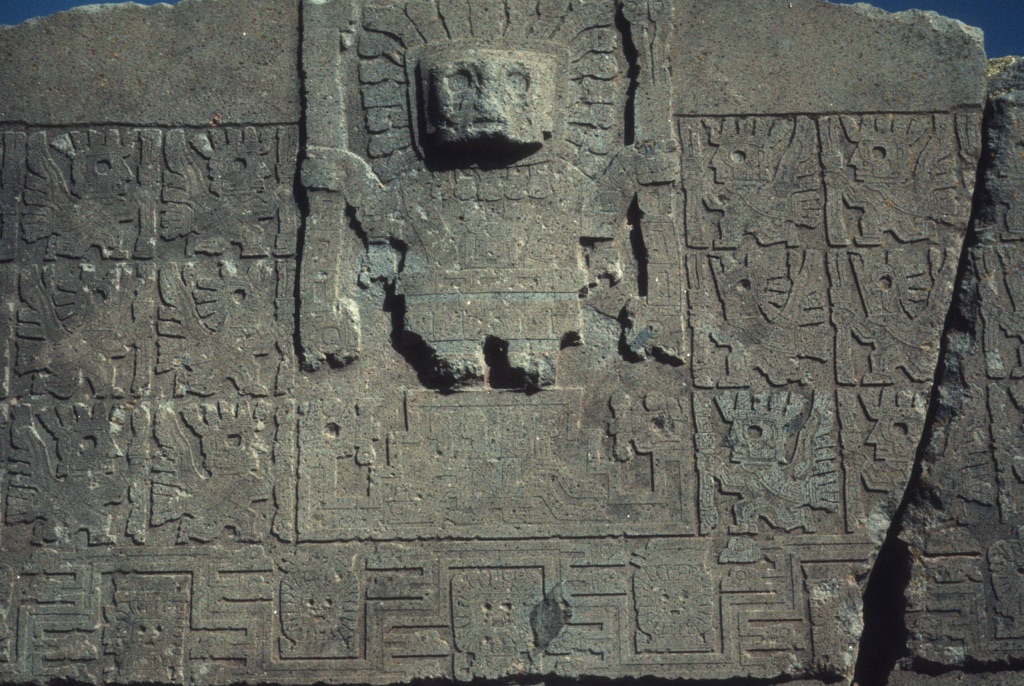
Historical Rediscovery and Theories
When European explorers rediscovered the gate in the mid-19th century, it was found lying horizontally with a large crack, indicating it might have been moved from its original location. Today, it stands where it was found, but its exact original site remains uncertain. Despite its name, the Gate of the Sun doesn’t align with the sun during solstices or equinoxes – an unusual characteristic for such a monument. This has led to theories suggesting it was relocated or that it aligns with celestial events yet to be fully understood.
Theories and Interpretations: Unveiling the Gate’s Secrets
The Gate of the Sun has fueled countless interpretations and theories. The central figure is often identified as Viracocha, the creator deity in Tiwanaku mythology, flanked by winged attendants. The surrounding figures are believed to represent celestial bodies and agricultural cycles, hinting at the advanced astronomical and agricultural knowledge of the Tiwanaku. One intriguing theory suggests the gate functioned as a calendar. The 48 squares surrounding the central figure are thought to represent the 12 lunar months, each further divided into four weeks. However, this interpretation remains a topic of debate among scholars.
Ornamental and Symbolic Significance
The design beneath the central figure is thought to represent celestial cycles, further emphasizing the astronomical significance of the gate. Scholars have proposed that the monument could represent a transition from lunar to solar religious practices based on its alignment and iconography. The geometric and symmetrical patterns on the gate reflect a sophisticated understanding of space and rhythm, demonstrating the Tiwanaku’s advanced artistic and architectural capabilities.
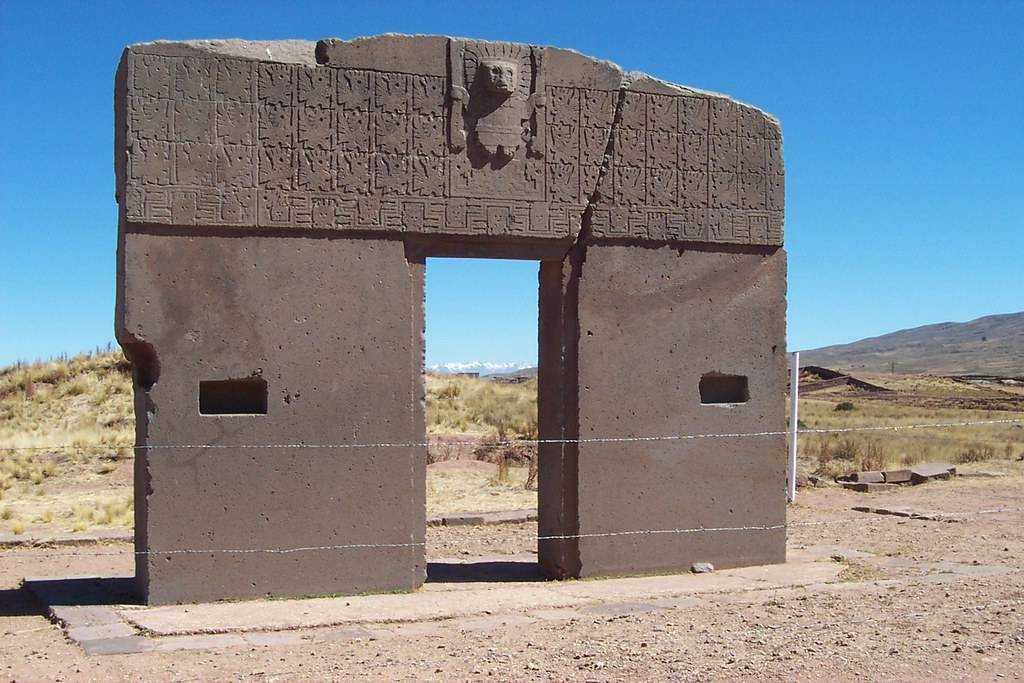
Cultural Impact and Legacy
Today, the Gate of the Sun remains a potent symbol of Bolivia’s rich cultural heritage and a major draw for tourists. Remarkably preserved despite centuries of exposure to the elements and human activity, the gate’s intricate carvings continue to offer a captivating glimpse into the lost world of the Tiwanaku civilization. Its representation of the god of staffs, a deity linked to the creation myths and celestial worship of the Andes, underscores the spiritual and cultural depth of this ancient society.
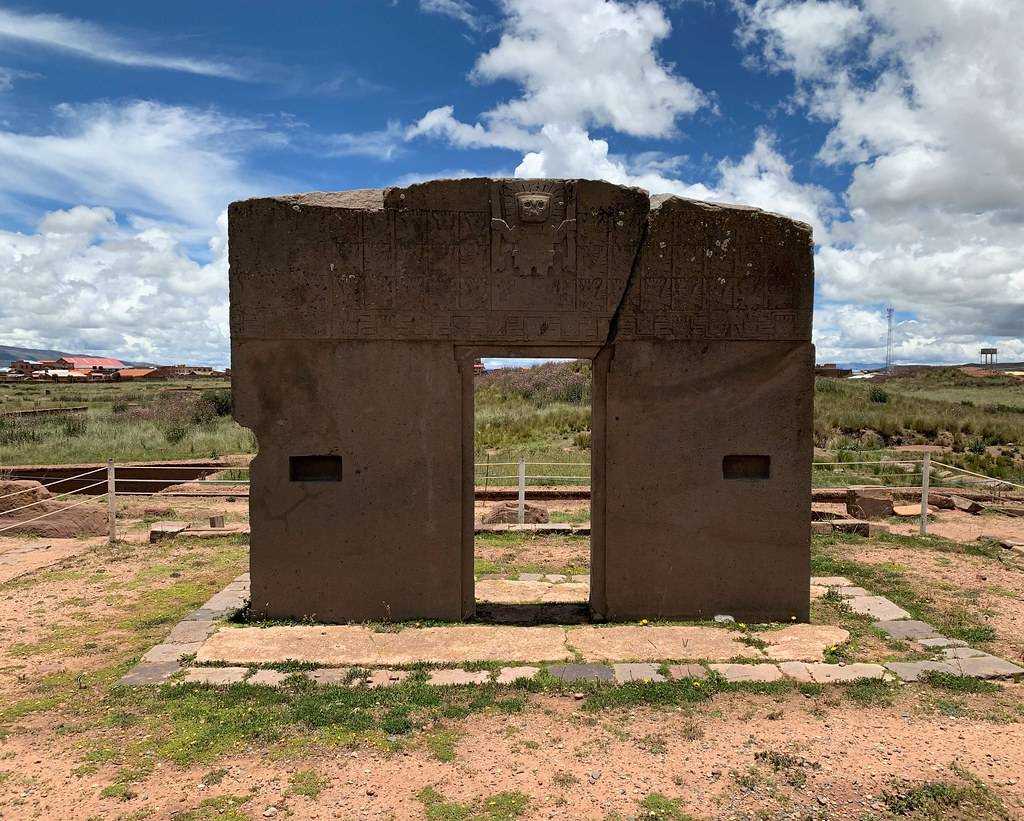
For further reading and information, refer to the following sources:
If you like this article, you should definitely give these a read:

